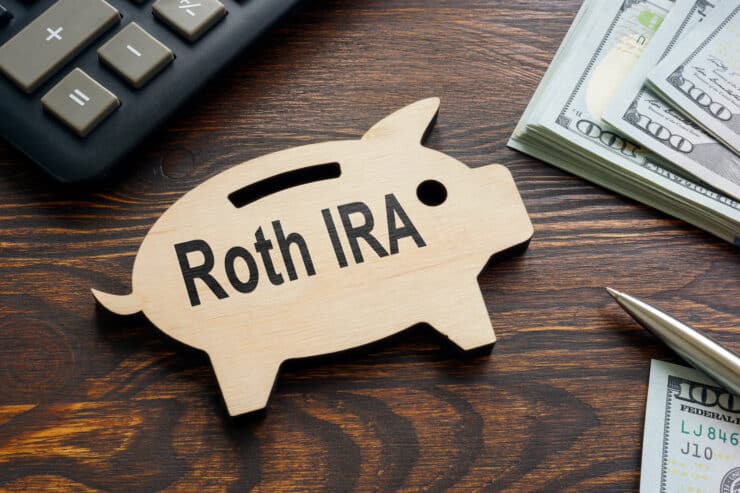Do One Thing: Curious about how converting a traditional Individual Retirement Account (IRA) to a Roth IRA might work for you? Start with an internet search for a ‘Roth conversion calculator’ and then select the option of your choice. Follow the directions (and plug your numbers) to get an idea of the potential tax implications for your situation.
The number of Americans saving for retirement – and other future financial endeavors – through Individual Retirement Accounts (IRAs) has been steadily growing. In 2023, some 55.5 million American households say they owned IRAs, according to the Investment Company Institute (ICI).
Understanding IRA Basics
There are two main types of individual retirement accounts or IRAs: Traditional and Roth IRAs. Congress created traditional IRAs to give people not covered by employer-sponsored retirement plans (like 401(k)s) an opportunity to save in a tax-advantaged way.
In 2021, traditional IRAs accounted for 84% of total IRA assets according to the ICI. The way these accounts work, you make deposits with pre-tax income. The money, when invested, grows tax-deferred. When you withdraw funds in retirement, you pay income taxes at your current tax rate.
Roth IRAs are not quite as popular as traditional IRAs, but upwards of 26 million Americans still have made Roth contributions. Roths are, in many ways, the reverse of traditional IRAs from a tax perspective.
- You contribute money on which you’ve already paid income taxes.
- The money, when invested, then grows tax-free.
- When you pull the money out in retirement, you owe no further taxes.
Additionally, Roth IRAs offer greater flexibility than traditional accounts in that you can withdraw principal without penalty after 5 years, pull out some money to pay for a first home, and aren’t subject to required minimum distributions.
What is a Roth Conversion?
A Roth conversion is a transaction that moves assets from a traditional IRA into a Roth IRA.
When you convert assets, you move money from a pre-tax account to a post-tax account and so, you have to pay income taxes (again at your current rate) on the money transferred. For this reason, it makes sense to do a Roth conversion in years when your income is lower than usual or when the market is down. Both result in a lower tax bill.
Why Convert to a Roth IRA?
Justin Pritchard, a certified financial planner and owner of Approach Financial, says people gravitate to Roth conversions because they can give you greater control over your tax bills in the future. That, in turn, can help you manage costs in retirement — and not just tax costs. That said, people often find there are benefits to having both types of pots to draw from in retirement. “You don’t necessarily need to convert every penny,” he says. “It’s okay to have some taxable income, and the idea is to target a level of income that’s acceptable.”
Who Benefits From a Roth Conversion?
As Pritchard and other financial planners explain, Roth conversions aren’t for everyone. They may be for you if:
- Your future tax rate (in retirement) could be higher than it is now.
- You want investment earnings to grow tax-free.
- You would like to avoid the required minimum distributions (RMD).
How to Convert a Traditional IRA to a Roth IRA
There are several different ways to convert a traditional IRA to a Roth, assuming you already have a traditional IRA account. In all cases, you have to pay taxes on the converted income.
- Rollover. A rollover is where you receive a distribution from a traditional IRA and contribute it to a Roth within 60 days, having paid the taxes.
- Trustee-to-Trustee Transaction. In this method, you advise a financial institution holding your traditional IRA to transfer a specific amount to the trustee of your Roth at a different financial institution. (This may happen by a check being issued to you and payable to the new trustee).
- Same Trustee Transfer. In this conversion, you transfer funds held at the same institution from one account to another.
Where to Find Help
A retirement-focused financial advisor – or one who focuses on taxes – can help you figure out if a Roth conversion makes sense for your unique situation, and how much you might want to convert. You don’t have to convert the entire balance of your traditional IRA at once — or even at all. “By making partial Roth conversions,” Pritchard explains, “you can slowly chip away at pre-tax balances without a large immediate tax consequence. By staying in lower tax brackets while you convert, the strategy is more likely to pay off.”
An Asset Location Approach
Once you’ve converted assets to a Roth he notes, you’re going to want to take a fresh look at how the money is invested. It typically makes sense to hold higher growth assets in a Roth, because you won’t owe taxes on the gains. Slower-growth assets typically make sense for traditional IRAs.






